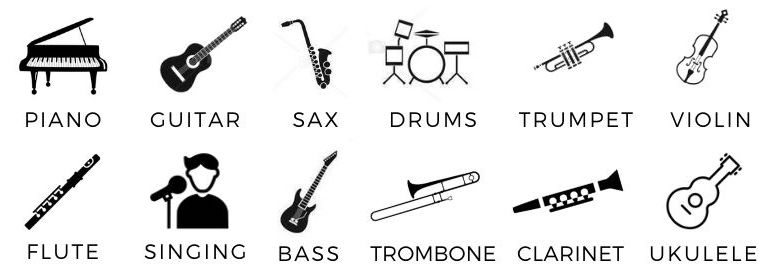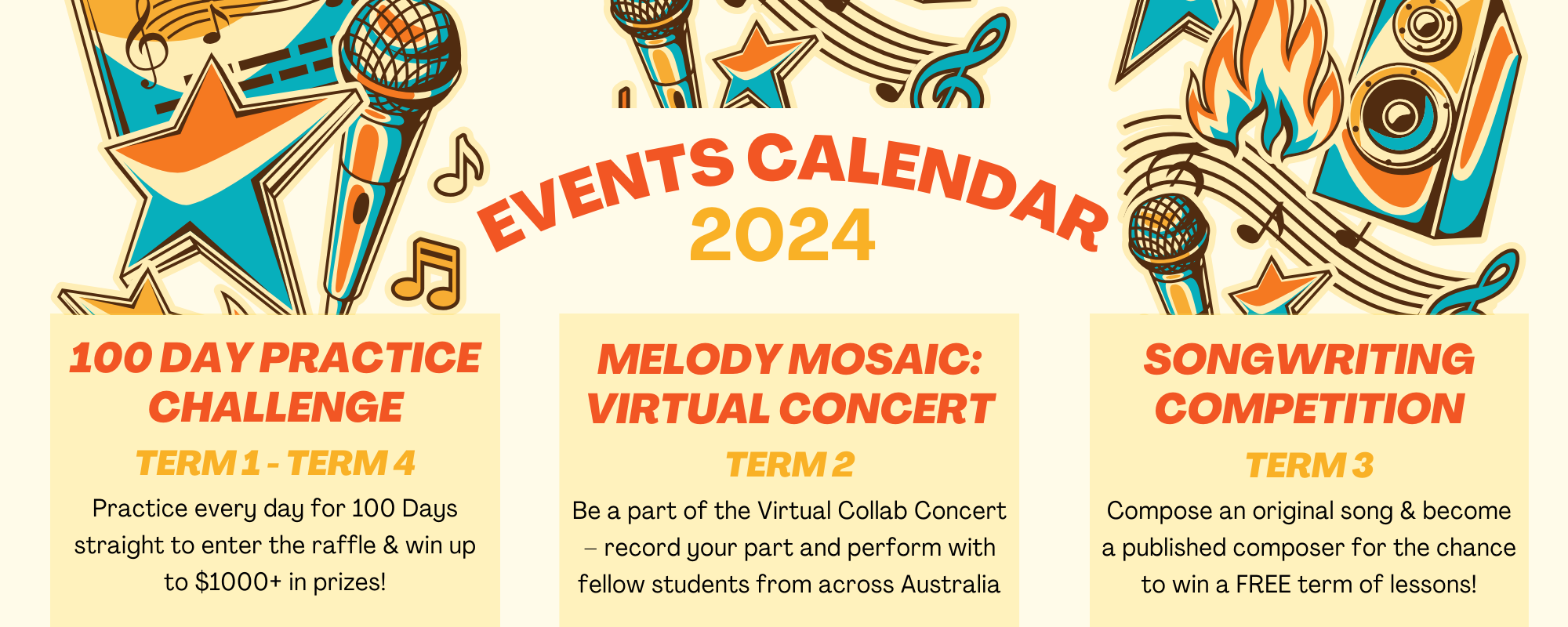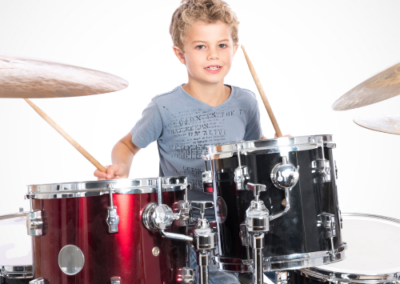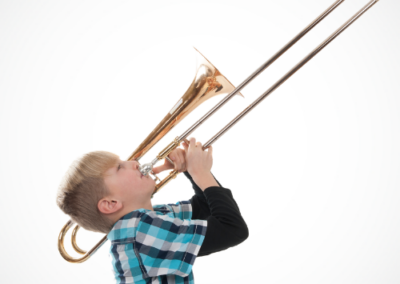Can You Teach Yourself To Sing?
So, can you teach yourself to sing? Absolutely!
Is it difficult learning how to sing by yourself? It can be, but like all good things, the more you do it the easier it becomes!
Can I learn to sing if I have no talent? First, stop that. Of course you have talent!
Today we’ll talk about how to access that talent, and how to start singing for beginners.
As a music teacher giving singing lessons for beginners, I’ve worked with a lot of students who taught themselves at first.
And while some are more successful than others when it comes to self-taught singing, you can’t go wrong by starting off with the correct singing techniques.
But I promise, if you master the foundations in this article, you won’t believe how far you can get on your own!
So today, let’s look at some great singing tips for beginners:

MUSIC LESSONS IN THE CONVENIENCE OF YOUR OWN HOME
We are a network of young & enthusiastic University Students providing the very best in private 1 on 1 music lessons in your home – in your local area.

WE OFFER YOU IN-PERSON HOME MUSIC CLASSES FOR STUDENTS OF ALL AGES & LEVELS
If you are looking for an eager, professional & reliable local music teacher to come to your home – one of us will be available, & will be able to provide you a very affordable lesson rate.
10 Easy Steps to Follow so You Can Teach Yourself to Sing
Step #1: The Right Posture for Singing
What is the easiest way to sing for beginners?
Well, here’s some good news:
Fixing your posture is one of the quickest and easiest things you can do to learn how to sing better.
Here’s why:
I’ve had lots of students whose voices are improved immediately just by fixing their posture.
So if you’re having trouble getting the right vocal tone and power you want, start with posture.
Here’s what you need to know:
The correct posture for singing is called the tall posture.
Having tall posture simply means that you’re keeping your body in good alignment so you sound your best.
Find the Right Posture in 3 Easy Steps:
1. Stand up and spread your feet apart so that they’re about shoulder-width apart.
2. Next, with your feet at shoulder width, watch where your hips are and bring your shoulders in line with your hips and feet.
You should see that your feet, hips, and shoulders are all in a line and that you’re not slouching.
3. Finally, keep your chest comfortably lifted and make sure that your neck and chin are straight.
It’s important to check yourself in front of a large mirror.
Now, in front of the mirror, turn to your side and make sure that your back is also straight.
That’s it!
Step #2: Breath Support
Here’s the ugly truth:
Most voice teachers spend way too much time teaching breath support.
And it can be such a waste of money because learning to breathe correctly for singing is super easy.
So if you want to improve your breath support, increase vocal power, and teach yourself to sing in tune, learn good breath support.
After all, breathing is essential for singing.
Can you teach yourself to sing if you can’t breathe properly?
Unlike most rhetorical questions in this article, that one is a definitive “no.”
So, here’s what you need to know about breathing for singing:
The correct breath for singing is called the diaphragmatic breath.
Singing from the diaphragm simply means breathing from your stomach, rather than from your chest or shoulders.
And when you breathe from your stomach and diaphragm, you can take much fuller and more efficient breaths than when you breathe from your chest or shoulders.
Breathe from the Diaphragm in 3 Easy Steps:
1. Stand in front of a mirror and turn to the side so that you can see your chest and stomach.
2. Next, place your hands around the bottom of your belly and inhale so that your stomach comes out as you breathe in.
3. Finally, exhale so that your stomach comes back in as you breathe out.
Make sure that you’re not moving your chest or shoulders when you inhale.
If you keep all the movement isolated to your stomach when you’re breathing, you’ll notice that your belly has to come out as you inhale.
That’s it! Pretty simple really.
Make sure that your belly comes out when you breathe before you sing.
Then your belly will come back in again as you sing.
You’ll be amazed at how this simple switch in the way you breathe can make you sound so much more powerful.
Step #3: Learn To Sing on Pitch
Most people can hear if you’re on pitch or not within a matter of seconds.
For this reason, many of my students have asked me: “how can I teach myself to sing better on pitch?
Unfortunately, teaching yourself to sing on pitch can be pretty hard to do.
That’s because learning to sing in tune requires that you get feedback about whether you’re on the note or not.
That feedback could be from a vocal coach.
But, here’s the good news:
Just because you’re off pitch doesn’t mean that you’re tone deaf.
The idea that if you can’t sing in tune you must be tone deaf just isn’t true!
Having taught over 500 students, I can tell you that, no matter who you are, you can learn to sing on pitch.
I work with singers all the time who have been told that they’re hopeless.
Then in a single hour lesson, they’re singing on pitch and sounding great. They just need to develop the technique of singing in pitch.
What’s the secret?
Singing in tune just takes the right feedback and vocal techniques.
Sing on Pitch in 3 Easy Steps:
1. Count from 1 to 5 and back down out loud in a strong speaking voice like this: “1, 2, 3, 4, 5, 4, 3, 2, 1.”
2. Next find a comfortable note at the bottom of your range (try C3 for guys and G3 for girls) and sing that first note on the word “one”.
3. Now, start count out each note in a 5-tone scale from the first to the fifth note and back down.
Don’t be afraid to let your voice go up or down when you’re trying to find the first note.
Many students just need a single correct note to set up the rest of the pitches in the scale.
While you’re doing this exercise, remember that the notes of the scale are very close to each other.
So if you feel yourself getting off pitch, try to keep the notes a bit closer together.
Starting with small, simple scales like this will help you build up to more complicated melodies.
Step #4: Learn to Project
Let’s face it:
Who cares if you can sing well if nobody can hear you?
The truth is that projecting your singing is one of the most important things to master when you’re teaching yourself to sing.
Luckily, learning to project is really easy to do.
It just takes a couple of simple vocal techniques.
So no matter whether you’re singing a little lightly, or you’re looking for more vocal power, here’s what you need to know:
The best way to learn to project is to use the power of your speaking voice when you sing.
When you speak, your voice is naturally resonant and projected. That’s because you’re trying to communicate yourself clearly.
So let’s apply the same feeling of your speaking voice to your singing.
Learn to Project in 3 Easy Steps:
1. Take a phrase from a song that you want to sing stronger.
2. Next, say the words of the phrase out loud like you’re on stage and you need to reach the back row of the audience. Find this strong volume without whispering or yelling.
3. Finally, go back to the lyrics and “speak sing” the words on pitch with the same feeling that you just spoke them.
You should notice that your vocal power is much stronger and that you have a clear and projected tone.
The amazing thing is that just singing a bit more strongly will give you a much better foundation for singing across your whole range.
Step #5: Sing in Chest Voice
Terms like chest voice and head voice are really confusing when you’re first starting out.
That’s because it’s difficult to know if you’re singing in chest or head voice correctly on your own.
But chest voice and head voice are super important to helping you sing better. So, let’s start with teaching you to sing in chest voice the right way.
Here’s what you need to know about chest voice:
Chest voice is a term invented by old school Italian teachers to describe the notes at the bottom part of the vocal range.
To feel your chest voice, try this:
Place your hand on your chest and say your name out loud at a strong, projected volume.
Feel that vibration? That’s chest voice.
So why is chest voice important?
Well, unfortunately a lot of beginning singers sing too lightly in their chest voice.
And if you’re singing with light chest voice, you’ll have a hard time with breath control, vocal tone and even pitch.
So, if you’re having trouble with this, singing with a strong chest voice is a great place to start.
And how can you teach yourself to sing like this?
Here’s one of my favorite exercises for doing just that!
Sing with Chest Voice in 3 Easy Steps:
1. Place your hand on your chest and start saying the word “Gug” (as in “Gutter”) out loud at a strong volume. You should feel a strong vibration against your hand as you say it.
2. Next, find a comfortable note at the bottom of your voice (try C3 for guys and G3 for girls) and sing the word “Gug” on that note with the same strength as you were speaking it.
As you’re singing the “Gug” exercise, keep the “G” consonant strong.
This will help you find the strong chest voice sound you’re looking for.
You won’t believe how much more powerful your voice is when you start learning to sing with chest voice!
Step #6: Sing in Head Voice
Now that you’re singing with your chest voice, it’s time to find your head voice.
How do beginners practice singing in head voice? And for that matter, what is head voice?
Here’s what you need to know:
Head voice is a term invented by old school Italian teachers to describe the notes at the top part of vocal range.
To feel your head voice, try this:
Place your hand on the back of your neck and sing a really high note on an “ooh” vowel as in “oops”.
Feel that vibration on the back of your hand? That’s head voice.
So why do you need to sing with head voice?
Head voice is responsible for all the high notes in your voice.
Unfortunately, too many singers try to sing the top notes in their voice with too much chest voice.
But pulling chest voice up to high notes will make your voice strain and your notes will be flat.
So if you dream of glorious high notes, learning to use your head voice is an absolute must.
Here’s one of my favorite exercises for singing in head voice.
Sing with Head Voice in 3 Easy Steps
1. Place your hand on the back of your neck and say the vowel “ooh” as in “oops” out loud at a comfortable volume.
2. Next, sing the “ooh” on a comfortable note at the bottom of your voice.
3. Finally, with your hand on your neck sing a vocal siren where you go from the low note all the way to the very top of your voice and back down.
You should feel more vibration on your hand the higher you sing in your voice.
Don’t worry if your voice breaks as you sing through your range.
The vocal break is just a sign that you’re “switching” to your head voice at the top.
And while I’ll teach you to eliminate vocal break soon, right now it means that you’re singing in head voice.
You’ll be amazed at how much easier high notes get as you become more comfortable finding your head voice.
Step #7: Sing with a Mix of Chest and Head
Now that you’ve sung with chest voice and head voice, it’s time to mix them together.
What do I mean by that?
Well, up until now, we’ve been treating chest voice and head voice as two completely different areas of your voice. And there’s probably a break or “flip” between them.
But if you want to hit high notes with more power, we need to connect these different parts of your voice together so they sound like one strong voice.
Unfortunately, many people will sing through their break with too much chest voice or too much head voice and they’ll strain.
Here’s why:
If you sing through the middle with too much chest, you’ll just strain and fall flat.
If you sing through the middle with too much head, you’ll be too light and breathy.
So what we need to do is a find a mix of these two voices.
One of my favorite exercises for connecting these two registers is the “Gee” exercise.
Here’s how you do it.
Sing with Mixed Voice in 3 Easy Steps:
1. Say the word “Gee” as in “Geese” out loud at a comfortable volume.
2. Find a comfortable note at the bottom of your voice (try C3 for men and G3 for women) and sing the word “Gee” on the note with the same power that you used to speak it.
3. Sing the word “Gee” on an octave and a half scale, where you replace each note of the scale with the word “Gee”.
Now, as you sing through the scale, it’s going to be very tempting to “flip” or go into your falsetto when you sing those high notes.
Instead, keep your focus on the “G” consonant to make sure all those high notes are strong.
You’ll be amazed at just how easy it is to hit those amazing high notes with power when you use the “Gee” exercise.
Step #8: Teach Yourself to Belt
Now that you’re hitting higher notes with a mix of your chest voice and head voice, let’s start putting some more power into each one of those high notes.
That means belting.
But what is belting and how do you do it?
Belting simply means singing high notes with the power of your chest voice.
But be careful:
There’s a right way and a wrong way to belt high notes.
Too many people just try to pull up their chest voice as high as they can when they’re learning to belt.
But, if you use too much chest voice, it’s very easy to fall flat and strain.
So what we need to do is use a mix of the chest voice and head voice.
That way, you’ll have to relax and stretch the head voice, with the power and strength of your chest voice.
Teach Yourself to Belt High Notes in 3 Easy Steps
1. Say the word “Nae” as in “Nasty” out loud in a bratty way.
To get the bratty sound, just imagine that you’re a little brat on the playground using a teasing voice.
2. Find a comfortable note at the bottom of your voice (try C3 for guys and G3 for girls) and sing the bratty “Nae” on that note.
Make sure that you’re keeping that bright and brassy sound.
3. Sing the “bratty Nae” on an octave repeat scale so that you’re repeating the top note four times.
What I love about the “Nae” exercise is that the “bratty” sound gives you the power of your chest voice without pushing so much on the high notes.
And you’ll be amazed that just using a bit of this bratty sound can help you hit high notes with tons of vocal power.
Step #9: Sing with Vibrato
Vibrato is one of the most important vocal effects to teach yourself as a singer.
That’s because nearly every famous singer has a killer vibrato.
But what is vibrato and how do you find it?
Vibrato is the rapid shimmer or shake that you hear when a singer holds a note.
Listen to Lady Gaga’s vibrato:
But vibrato isn’t just for professional singers.
Even beginning singers should try to find some vibrato in their voice.
Luckily, it’s really easy to teach yourself to sing vibrato!
I have lots of exercises to help you sing vibrato, but here’s one of my favorites:
Teach Yourself Vibrato in 4 Easy Steps:
1. Bring your index and middle fingers together like you’re pointing and place them both about an inch above your belly button on your solar plexus.
2. Pick a comfortable note at the bottom of your range (try C3 for guys and G3 for girls) then sing and hold an “ee” vowel (like “eat”) on that note.
3. Now, sing the note again and while you’re singing, pulse into your stomach with your fingers like you’re poking yourself in the stomach.
4. You should hear the pitch start to wobble and shake as you move your fingers in and out.
Here’s a cool video where I walk you through it:
How to Sing Vibrato: 12 Easy Ways to Make It Happen
Now, when you’re first getting started with vibrato, it can be really difficult to hear if you’re doing it correctly.
So I recommend that you record yourself when you’re practicing this exercise.
Once you find the vibrato, see if you can get that same feeling each time you have to sing and hold a note. Just getting a bit more vibrato in your voice is a great way to add excitement and beauty to your songs.
Step #10: Sing Songs
Let’s be honest:
The only reason to do vocal training is to sing songs better.
So now that you’ve learned to expand vocal range, try singing a song.
Now, before you jump in let me say this:
Songs are way harder to sing than vocal exercises.
That’s because when you’re singing vocal exercises, you’re usually keeping some things the same.
Here’s what I mean:
Most of the time in vocal exercises, you’re singing the same word on different notes (like “Gee”, for example).
That’s because the voice works better when some things are stable.
But when you sing songs, the vowels, consonant, volume and tone of notes are changing all the time.
So when you need to sing high notes in songs, it’s a great idea to do a vocal exercise and then come back to the song.
One of my favorite exercises for singing songs is to replace the lyrics with a “Gee”.
One Simple Exercise to Improve Your Songs:
1. Select a phrase of a song that’s been difficult for you.
2. Next, sing the melody of the phrase but replace each word with the vocal exercise “Gee”.
So, for every note, sing the word “Gee” instead.
You should feel that singing “Gee” makes the phrase much easier to sing.
3. Finally, go back to the lyrics and sing the words with the same feeling that you got with the “Gee” exercise.
You’ll be amazed at how just singing the melody in one word can make the whole song better.
And once you’ve gotten that song down, you can apply the same feeling to the actual lyrics.
Continue Learning to Sing
By way of conclusion, let’s return to our central question: can you teach yourself to sing?
Absolutely!
By now, you’ve taught yourself some of the most important concepts in singing.
You should feel that your notes are stronger, more projected, and have a better tone.
Your range should also be bigger and more powerful.
But if you had any trouble with the exercises, go back and try them again.
These exercises are all about learning how to sing for beginners step by step.
So, figure out what’s working for you and practice the exercises daily.
If you are considering beginning singing lessons to help you boost your singing capabilities even further, look no further than Music Lessons Australia. We have a wide range of teachers whose focus is to help you with learning to sing and master control of your voice. We teach private in-home lessons or online lessons.

PRIVATE home MUSIC lessons in England, Scotland, Wales, & Northern Ireland for students of all ages & levels
If you are looking for an eager, professional & reliable music teachers to come to your home – we are available, & will be able to provide you a very reasonable music tutoring rate.
ENTHUSIASTIC STUDENTS
PROFESSIONAL TEACHERS
INSTRUMENT DISCIPLINES
What People Are Saying
My daughter’s teacher, John is superb and very talented. He is super patient with my daughter and he cares. You won’t regret taking lessons. I assure you =)


EMAIL: musiclessons@customersupport.care
PHONE: 1300 065 228
CALL BACK FORM
one of the friendly team organisers will contact you soon












